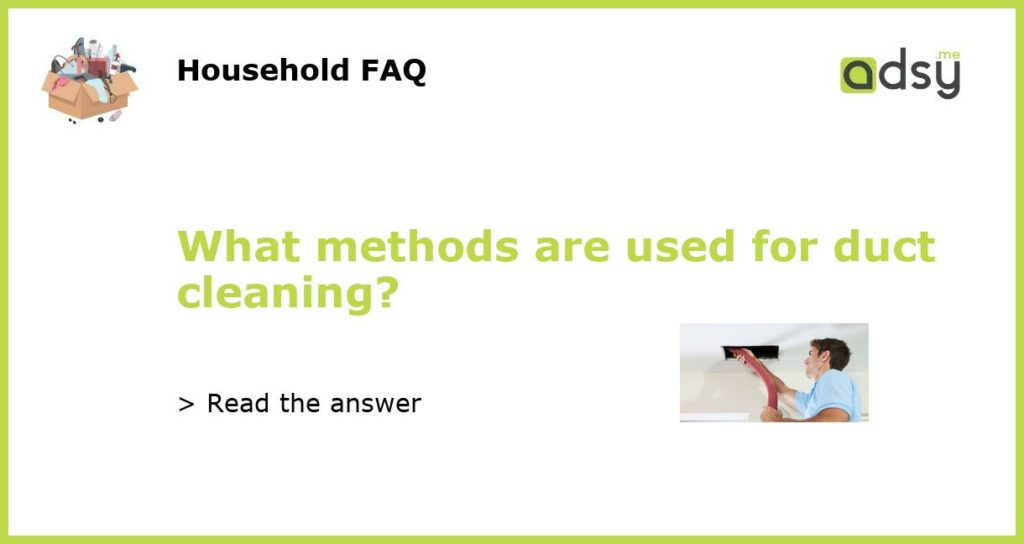Methods used for Duct Cleaning
Duct cleaning plays a vital role in maintaining good indoor air quality and ensuring the efficient functioning of HVAC systems. Over time, dust, dirt, mold, and other contaminants can accumulate in air ducts, leading to reduced airflow and potential health risks. To address these issues, various methods are used for duct cleaning. In this article, we will explore some of the most common methods employed by professionals to clean air ducts.
Manual Cleaning
Manual cleaning is a popular method used by trained professionals to remove dirt, dust, and debris from air ducts. In this method, technicians use brushes, vacuums, and other tools to physically dislodge and collect contaminants from the ductwork. They may also use compressed air to blow out stubborn particles.
During manual cleaning, technicians will inspect and clean each component of the HVAC system, including the registers, grilles, and air handling unit. They may also clean the supply and return ducts using specialized brushes that can reach deep into the ductwork.
Mechanical Agitation
Mechanical agitation is a method used to dislodge and remove contaminants from air ducts using high-powered equipment. One common technique is the use of rotating brushes or whips that are inserted into the ductwork and spun at high speeds. These brushes agitate the debris, dislodging it from the surfaces, which is then collected using powerful vacuum systems.
Some mechanical agitation methods also utilize pneumatic tools. These tools use compressed air to create pulses that dislodge dirt and debris in a more targeted manner. The dislodged particles can then be vacuumed out of the ducts.
Air Duct Cleaning Machines
Another method used for duct cleaning is the use of specialized machines designed specifically for this purpose. These machines typically consist of a high-powered vacuum and a collection system. Technicians will connect the machine to the air duct system, creating negative pressure to pull out contaminants.
These machines are equipped with filters to trap the collected dirt and debris, preventing it from being released back into the indoor air. Some machines also feature brush or whip attachments to help agitate and loosen stubborn particles during the cleaning process.
Chemical Cleaning
Chemical cleaning involves the use of cleaning agents or biocides to sanitize air ducts and eliminate contaminants. This method is often used to address mold or mildew growth within the ductwork. Technicians will apply the cleaning solution using sprayers or fogging devices, ensuring that it reaches all areas of the duct system.
It is important to note that chemical cleaning should only be performed by trained professionals who are knowledgeable about the appropriate use and disposal of these substances. Proper safety precautions should be taken to protect both the technicians and the occupants of the building.
Source Removal
Source removal is a comprehensive method that involves not only cleaning the air ducts but also addressing the root cause of contamination. In addition to removing the accumulated dirt and debris from the ducts, technicians will identify and address any issues that may be contributing to poor indoor air quality, such as leaks, gaps, or insulation problems.
This method may involve sealing or repairing ducts, installing additional filtration systems, or improving ventilation. By taking a holistic approach, source removal helps to ensure long-term air quality improvement and system efficiency.
These are just a few of the methods used for duct cleaning. Each method has its own advantages and may be more suitable for certain situations. It is advisable to consult with a professional duct cleaning company to determine the best method for your specific needs.

